Your venture into the mountains are risky and many hazards are involved in it. In mountaineering terms, we classify those into 2 types of Hazards - Subjective and Objective. Of the 2 hazards in the mountains, subjective hazard is often seen as a reason for lots of major and minor accidents in the mountains. Subjective hazards are the human error factors in the mountains which most of the times can be kept off by being aware of the risks and thereby, planning and preparing for those.
Any hazard in the mountain is a serious situation and has to be faced bravely and strategically to bring oneself back to safety. Being knowledgeable helps. Let me list some of the most frequent subjective hazards we encounter on a trek or a mountaineering expedition and how to plan better to avoid them.
What Are The Various Subjective Hazards In The Mountains
Slip, Fall, Bruise, Twist, Fracture:
While on a trek, you will encounter lots of trail sections which will be slippery.. a wet muddy landslide section, verglas, hard snow, slippery rocks, thin ice covered rocks and sometimes even small pebbels scattered terrain. Crossing a scree too bears the problem which is more of a objective hazard. However, some objective hazard are raised due to the subject, hence had to be kept in mind (explained later below ). Careless steps in these section can result in a slip and fall, which can cause deep bruises, twist your ankle or even result in a fracture at times. Remember, in the high altitude, deep bruises are not goo too !!
Prevention: Get your shoes according to the terrain you will be venturing into. Research the area well before you plan your trek. If you are trekking on your own, call your guide to enquire about the route. If its a organized tour, call your operator and enquire about the route. Most importantly, learn if there was a recent changes in the route due to landslide or so. Your guide might not know exactly, but it will give you an idea about majority of the route. Not just that !! It will send important message to your guide or operator that you are concerned about the safety.
Ankle protection in your shoe should be a must and is very important in that rough irregular terrain. I have seen trekkers twisting their ankles in front of my eyes because of no ankle protection. Some trekkers I don't know why do not tie the shoe lace properly and leave open the last hooks which actually provides the ankle protection. I believe they are the ones who loves to learn from a bad experience and does not like heeding to safety instructions. I usually go rough in the route banking on my ankle protection and it has always worked good for me.
Secondly, when I say choose your shoe according to the terrain, I mostly mean the sole as per the context of this article. ( Water proofing will be covered below under a separate hazard ) Your sole will protect you from slipping. Some soles are good for snow, while some for mud, some for slippery rocks. Explaining shoe soles is out of scope of this article.
Be careful while trekking on a risky area. Follow instructions and use support if required, like trek pole, ice axe, or simply your hand if possible.
Always anticipate these conditions. I remember a scenario in which a trekker had an accident when she was just coming out of her tent which was pitched on snow. When they arrived at the campsite, the snow was soft and easy to walk around the campsite. But with sunset, the upper layer of snow became hard and slippery. The trekker slipped as soon as she stepped out of the tent assuming it to be safe, but fell down twisting her ankle. Has she put on the laces properly before coming out of the tent, rather than just slipping on the shoes, she could have prevented the injury.
Snow Blindness:
Snow is a temporary inflammation of the cornea of your eyes due to continuous exposure to UV rays which causes temporary blindness and might also result in permanent blindness if not taken care of properly. People suffering from it says it is very painful. Concentration of UV rays are higher at high altitude and with snow surrounding you, it reflects the UV rays into your eyes. Hence, your eyes are exposed to UV rays which terribly irritate your eyes. Fresh snow are more harmful compared to old melting snow which has a layer of mud over it. Crossing the glacier zone covered by snow needs precaution.
Symptoms of snow blindness are blurred vision, painful and watery eyes.
Prevention: Snow blindness can be kept off by wearing a well polarized sun glasses which cuts off the glare and reflects back the harmful UV rays reaching your eyes. Make sure your eyes are protected from sides too, as UV rays entering from the sides of your sunglasses harm your eyes as well. Glacier goggles are well covered from both the sides. Nowadays, you get other sunglasses too giving you the protection from the sides. If not, improvise. Sunglasses with blue filter are not advised on the mountains as continuous exposure to blue light is harmful for your eyes and might cause retinal damage. Polarized Anti UV Sunglasses are a must if you are venturing in high altitude and even low altitude snow bound areas. Take special care of your porters for this. Check that they are well equipped before the trek.
Care: If you are somehow having painful eye condition in your trek, get into your tents and cover your eyes with dark cloth, preferably black. Stay indoors until you are completely healed. Use eye drop or ice to control the pain. You should be OK in day or two. If not, seek doctors help by returning back to the base. Further exposure to UV rays may harm your eyes more and cause permanent blindness.
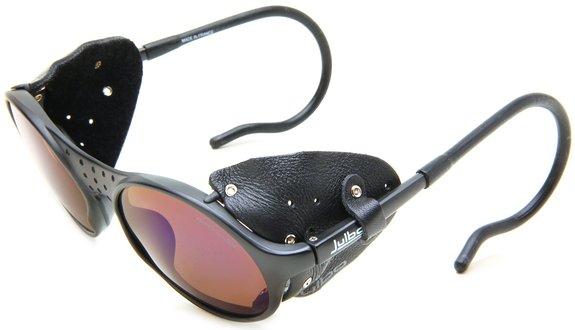
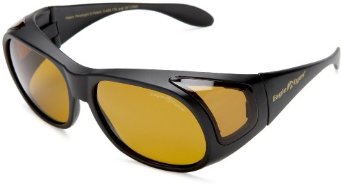
Cold Injuries - Chilblain, Frost Bites, Hypothermia:
Cold Injuries are one of those subjective hazard which comes from either unpreparedness or over smartness. You need to be aware of the environment and situations which are the causes of cold injury and prepare well to fight those. I have seen and know of people return from treks due to cold injury and sadly everyone I know of were TREK LEADERS !!
Isn't it disgusting to see your trek leader return from the trek because of a cold injury, not because he helped a trekker from an accident, but because of his lack of knowledge or lack of preparedness. I mean, how or what did he ask his trekkers to prevent cold injuries ?? Well, sadly, some of the biggest Trek Operator in our country hire trek leaders like that.
There are several cold injuries and those which mountaineers and trekkers are mostly subjected to are chilblain, frostnip, trench feet, frostbites 1st degree, frostbites 2nd degree, frostbites 3rd degree, frostbites 4th degree, Hypothermia, etc.
Frostnip and Chilblain
Frostnip and Chilblain are probably the first signs of cold injury caused by the exposed skin like nose, ear lobes and cheeks, mostly occurs due to chill wind hitting your face or exposed skin. It starts with redness in the exposed area which changes colour and darkens to purple and then blue black. It is painful and the extreme points often itches. The difference between frostnip and chilblain would be that frostnip does not include cellular damage but chilblain does. Chilblain can be considered as the starting point of a higher degree frost bites
Prevention: A simple prevention method of chilblain is to keep yourself covered, specially when chill air is blowing. Use gloves, socks balaclava or scarf, covering your ears and fore head. Take care of the cold wind hitting your exposed skins.Usually your shoe will have a rubber layer in front. Its important to insulate the toes. Use layering in socks. If you feel cold, consciously keep pumping blood into your limbs and fingers. Sometimes in a stranded situation, you need to do thigh ups to keep yourself warm. Its the first line of defence, and if taken care of properly, you can keep away with greater damage. I know of persons who have saved themselves by doing thigh ups through the night when they were stranded due to bad weather in Jaonli.
Care: Keep the affected part dry and warm. Wash it with dilute Betadine or Iodine solution and pat dry. Keep the areas free with frequent movements. It take a week to heal when kept under check.
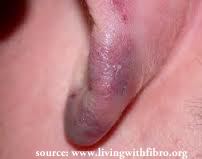
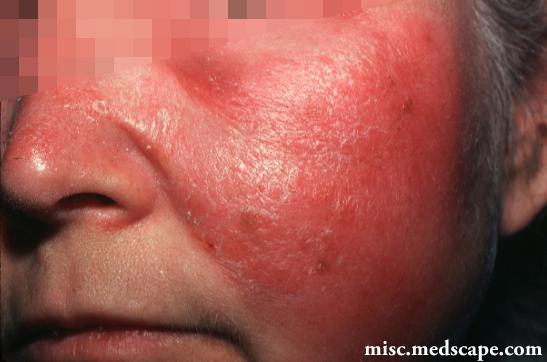

Frost Bites
When our body is exposed to cold temperature for a longer period of time, it defends itself by maintaining the temperature of the core and vital organs, thereby restricting blood flow to the extremities like fingers and limbs. This survival strategy of our body causes the cells and tissue of the extremities to die slowly because of lack of blood flow. This slow dying of soft tissues, nerves and blood vessels due to freezing is called frost bite. It is categorised into different stages as per the degree of damage and pain. Signs and symptoms may be pain in the affected area which slowly starts to get numb and discoloured. The colour changes from red to blue black to black as it degrades.
Frostnip is considered as a first degree frost bite. Second Degree frost bite is a step higher than frostnip and the sign presents in form of hardened skin layer with blisters, which looks greenish in colour. Numbness starts to click in but the sense is not lost. Further exposure to cold can bring in numbness and senselessness getting into Third Degree Frost bite. The blisters start to turn purple and pain starts to fade away due to the dying of nerve cells. Nerve damage restricts the usability of the limbs and fingers. A grade even higher to this is the Fourth Degree Frost bite in which the blisters and skin change colour to black and looses sense and usability. The affected part is often required to be amputated due to gangrene.
Prevention: Frost bite are mainly caused in snow bound areas. Its very unlikely to suffer from frost bite in a trek, but if you are venturing in snow bound areas, then you need to trek in a water proof shoes to protect your feet and socks from getting wet. Often, a snow storm may strand you for days making you prone to frost bite. Mountaineering boot are two layered with a plastic outer. Use of gaiters in deep snow is essential to save snow from getting into your shoes from the top. Water proof trousers should be worn to protect from rain and snow and similarly a poncho or a water proof jacket to protect from getting wet. Keep moving your fingers inside your shoes to increase blood flow which will keep you warm. Using layering to retain body heat. Body warmers can also be considered for use.
Care: I am no expert of a frost bite to suggest a care. First aid actions should be to try and slowly rewarm the area with luke warm water and restricting motion of the affected area. Rest, seek medical help at the earliest.
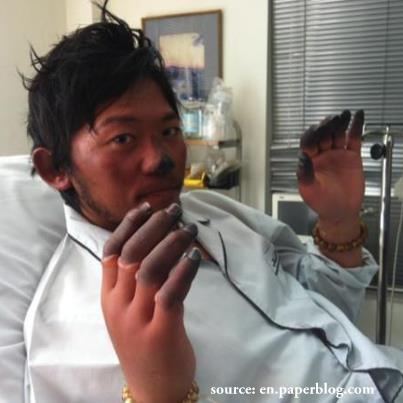
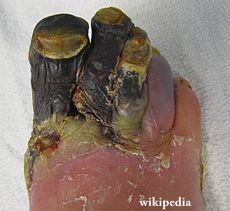
Hypothermia
Hypothermia is a condition in which the body temperature gets abnormally low creating a threat to life. Its an extreme condition which is rarely objective and mostly subjective in nature. This condition can be avoided with proper care.
Prevention: Firstly, you need to carry proper clothing meant for the cold environment to keep yourself warm. You should take all precautions to not get wet and if by any chance if you get wet, take care in getting dry as soon as possible. Putting on wet clothes draws heat from your body and hence drops your body temperature. If you are venturing in snow bound areas, then you need to trek in a water proof shoes to protect your feet and socks from getting wet. Use of gaiters in deep snow is essential to save snow from getting into your shoes from the top. Water proof trousers should be worn to protect from rain and snow and similarly a poncho or a water proof jacket to protect from getting wet. Not just yourself, but you should also take care in protecting your rucksack and clothes within your sack to prevent from getting wet. Your fingers get cold too quickly. Keep moving your fingers inside your shoes to increase blood flow which will keep you warm.
Care: Keep yourself dry and warm. Use warm water for drinking. If you even feel cold, rub your feet and palm to generate heat. Take a hot water bottle into your sleeping bag. Use 2 sleeping bags if required. Use body heat to warm your fingers,palm etc. Our armpits, pubic areas are warmer areas in our body. Use those areas to heat your hand. If that does not help, get help from your friend's body.
Trench Foot:
Trench foot is caused when your foot is wet inside your shoes due to sweat or water for a long period of time. Spending too much time in wet sock with tight shoes can cause it in just some 10 hours time. It is painful when you remove your shoe and dry it. If the skin has started to decay, bad smell will come too !!
Prevention: Keep your feet clean and dry, inside your shoes.
Care: Keep your feet open and dry in warm indoors conditions. It should heal on its own within a day. If the condition is bad and tissue decay has started, check a doctor immediately.

Unplanned Bivouac Camping:
Bivouac camps are camps in which you either sleep in open or an improvised shelter with whatever resource available. It is often planned but the unplanned ones are to be categorized under subjective hazards which mostly is a result of a bad overestimated plan or sloppy execution. Sometimes it may be because of bad weather conditions as well.
Prevention: Plan well. Always carry few things which can be improvised to make a shelter. Even carrying a good sleeping bag helps at times.
Care: If you are in a group, sleep closer. Nowadays, 2 sleeping bags can be zipped to form 1 bigger sleeping bag. Beware of wild animals. Choose your shelter appropriately. In snow, mountaineers dig it to make a bivouac shelter. These are warm.
Stomach Problems
Stomach problem usually happens due to water and food poisoning. It is a delicate thing causing severe outcomes sometimes costing a summit or retreating back. Take proper care of drinking water. Purify it before drinking. Eat with clean washed hands. Wash fruits before eating. Read the below links for further prevention.
How To Treat Drinking Water On A Trek
How To Prevent Diarrhea On Treks
Improper clothing
Sounds simple but a very important factor. Properly plan your clothes and other packing items before heading to the wild.
Learn the best practices here: https://himalayanhigh.in/best-practices